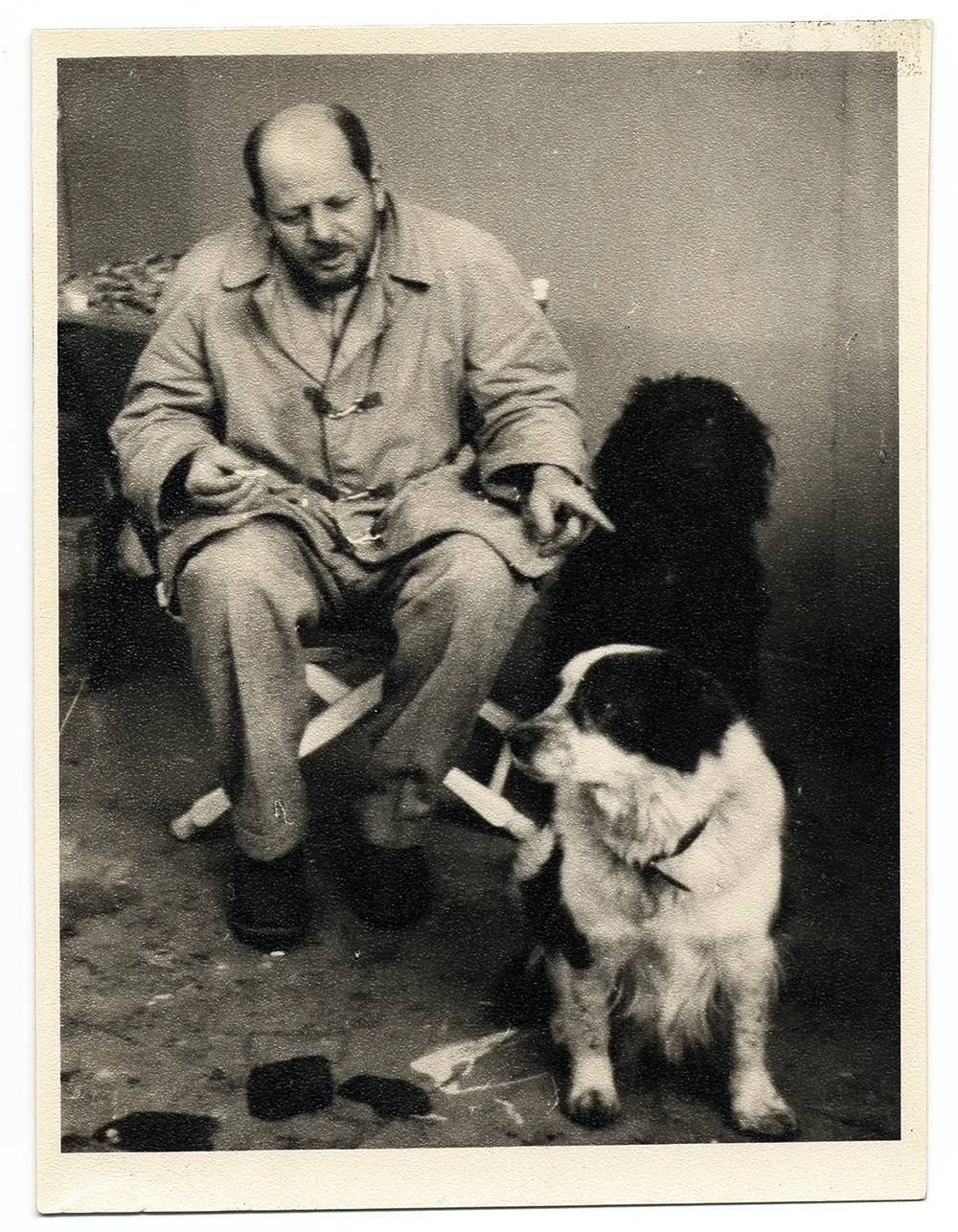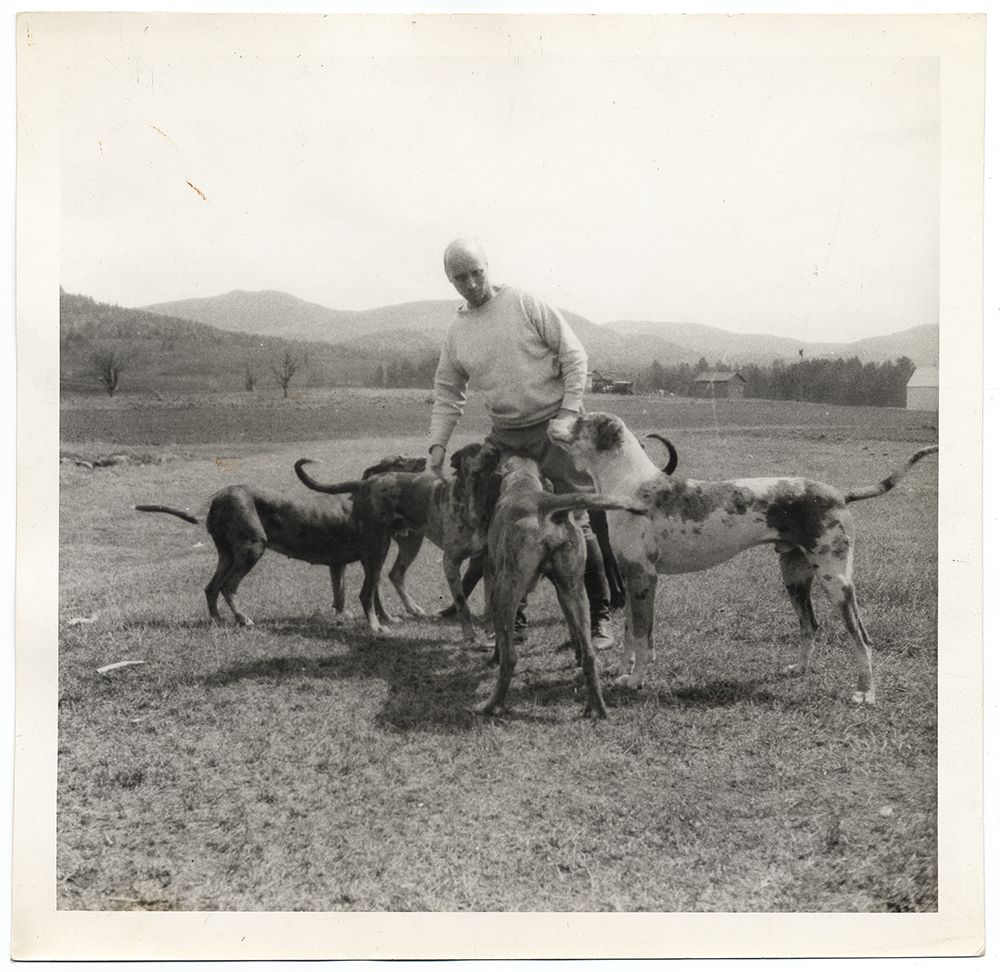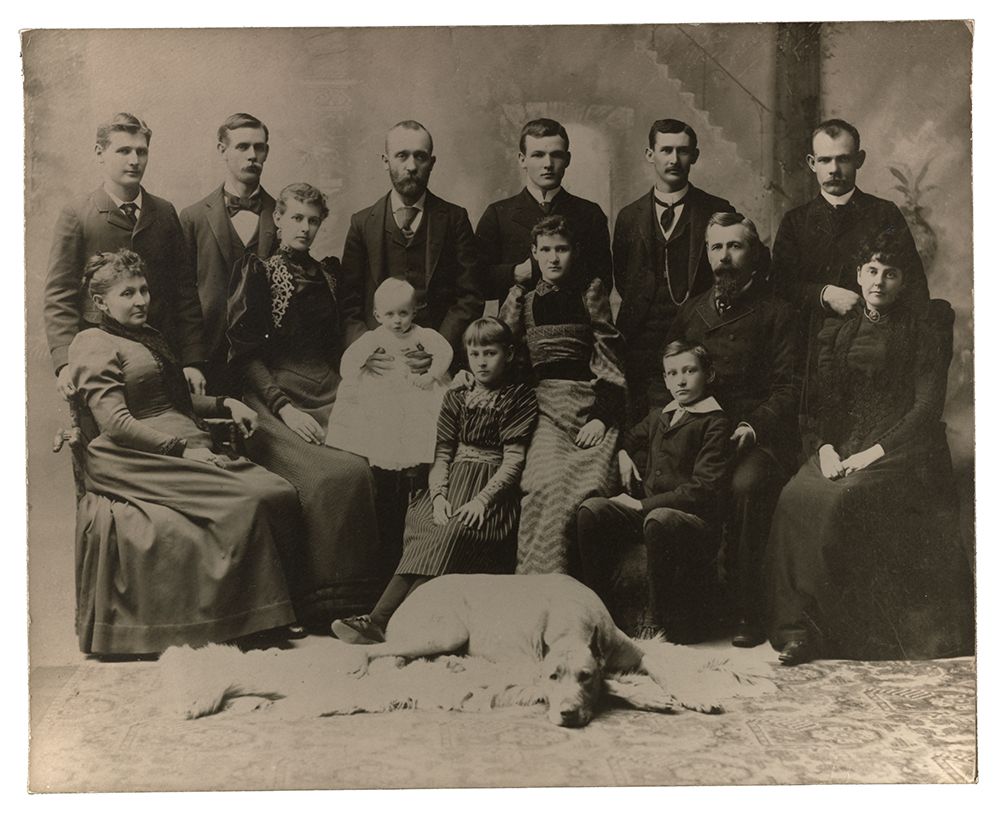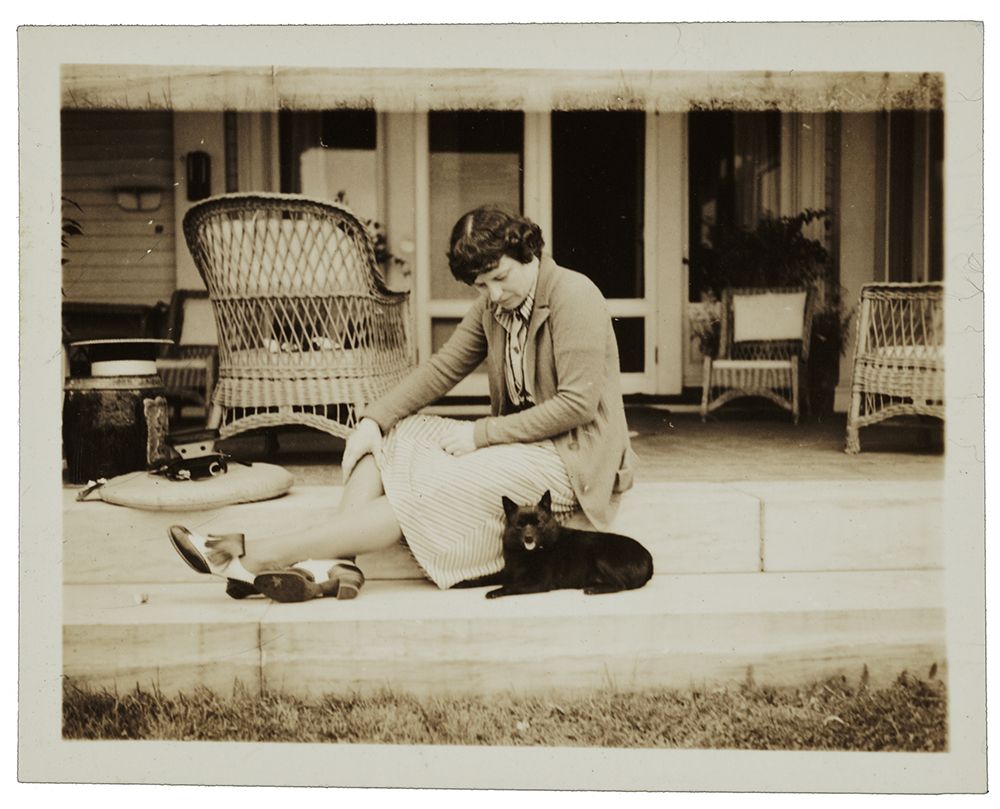Dog Days of Summer
/https://tf-cmsv2-smithsonianmag-media.s3.amazonaws.com/blogging/featured/AAA_kentrock_7272_SIV-crop.jpg)
The dog days of summer—those sweltering days of August, when the air hits you like a blast furnace—are upon us. To lighten our spirits in this oppressively hot month, the Smithsonian’s Archives of American Art has selected 31 photographs of artists with their dogs for the 31 days of August for our Flickr site.
These photographs chosen from the Archives’ collections show artists with their pets as faithful companions, willing models, or members of the family.
Jackson Pollock

Jackson Pollock (1912–1956), the leader of the Abstract Expressionist movement, had two dogs to keep him company in his studio—a Border Collie-mix named Gyp, and a standard Poodle called Ahab. Jackson and his wife Lee Krasner got Gyp in 1946, the year after they moved from New York City to East Hampton on Long Island. The name Gyp was a tribute to Jackson’s childhood dog, also named Gyp, short for gypsy or a wanderer. According to Helen A. Harrison, director of the Pollock-Krasner House and Study Center, Ahab was given to Pollock and Krasner by friend and fellow artist Alfonso Ossorio, probably in 1952. (Ossorio kept Ahab’s sister, Horla.) Jackson and Lee had a mutual interest in writer Herman Melville and named their Poodle after Captain Ahab of Melville’s Moby Dick, a fitting name for a dog living close to the sea. Gyp’s and Ahab’s scratch marks can still be seen on the door to Pollock’s studio.
Rockwell Kent

Artist Rockwell Kent (1882–1971) was a man of many talents. A painter, printmaker, illustrator, designer, and political activist, he also pursued careers as a writer, a dairy farmer, and a breeder of Great Danes. In November 1929, on a ship from Copenhagen to New York City, Kent sent fifty unfinished paintings and six Great Dane puppies (for customs, a painting and a puppy were equally valued at $100.00 each), and so began his brief career as a breeder. A few years he later gave it up and resigned from the Great Dane Club of America. In 1944, responding to a request for a puppy, Kent replied, “I don’t know whether to say that I am sorry or glad that I have no Great Dane puppies for sale. I have not for years kept more than one Dane.” He and his wife moved on to Fox Terriers, Great Pyrenees, and others.
Gutzon Borglum

Sculptor Gutzon Borglum (1867–1941) also had multiple Great Danes. Borglum, who created the largest and one of the most iconic works of American art—the heads of four presidents on Mount Rushmore—had four Great Danes. Borglum had an oversized personality, made oversized sculpture, and liked oversized dogs. But the Great Danes, or Danish Hounds, were also a reminder of his Danish-American heritage.
Katharine Ward Lane Weems

Katharine Ward Lane Weems (1899–1989) was famous for her realistic portrayal of dogs in bronze, especially Whippets, Huskies, Greyhounds, Dachshund, and Boxers. Each February she visited the Westminster Dog Show and would make a note in her diary anticipating the annual event. She studied the breeds, but she also followed the breeders, the winners and their progeny and always had a dog of her own.
A version of this post originally appeared on the Archives of American Art Blog.

